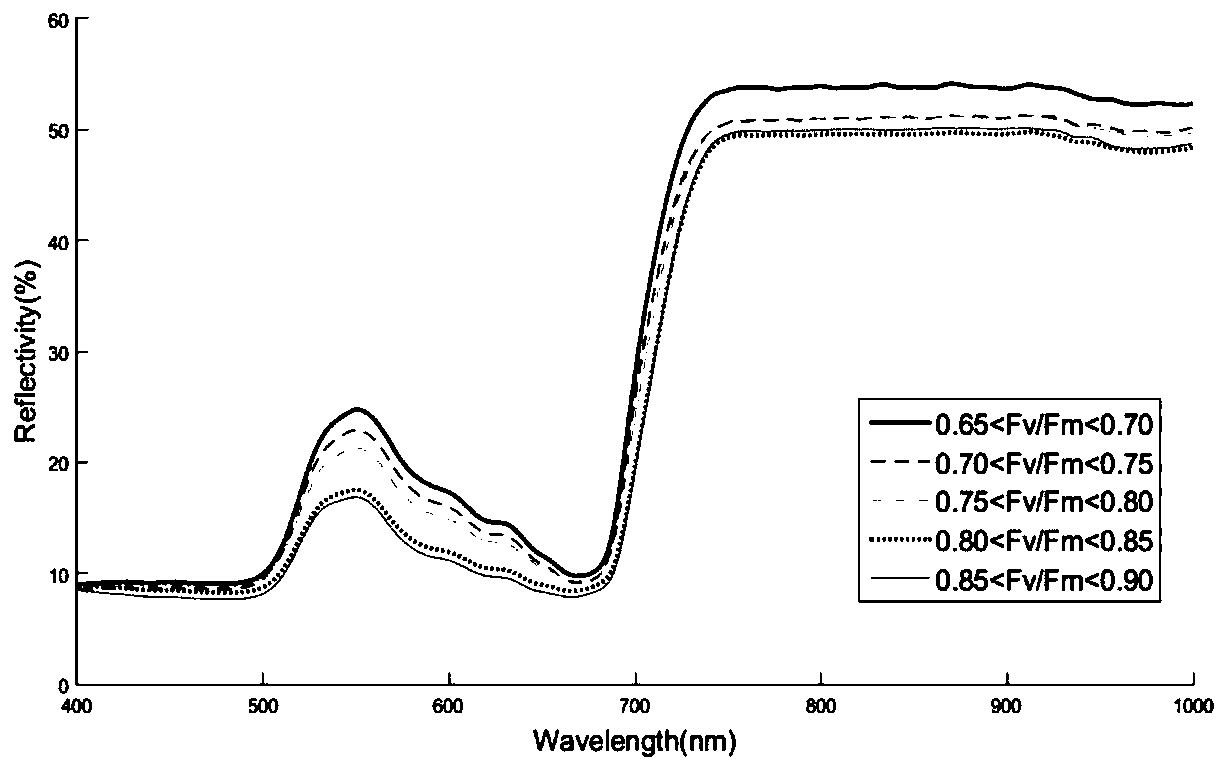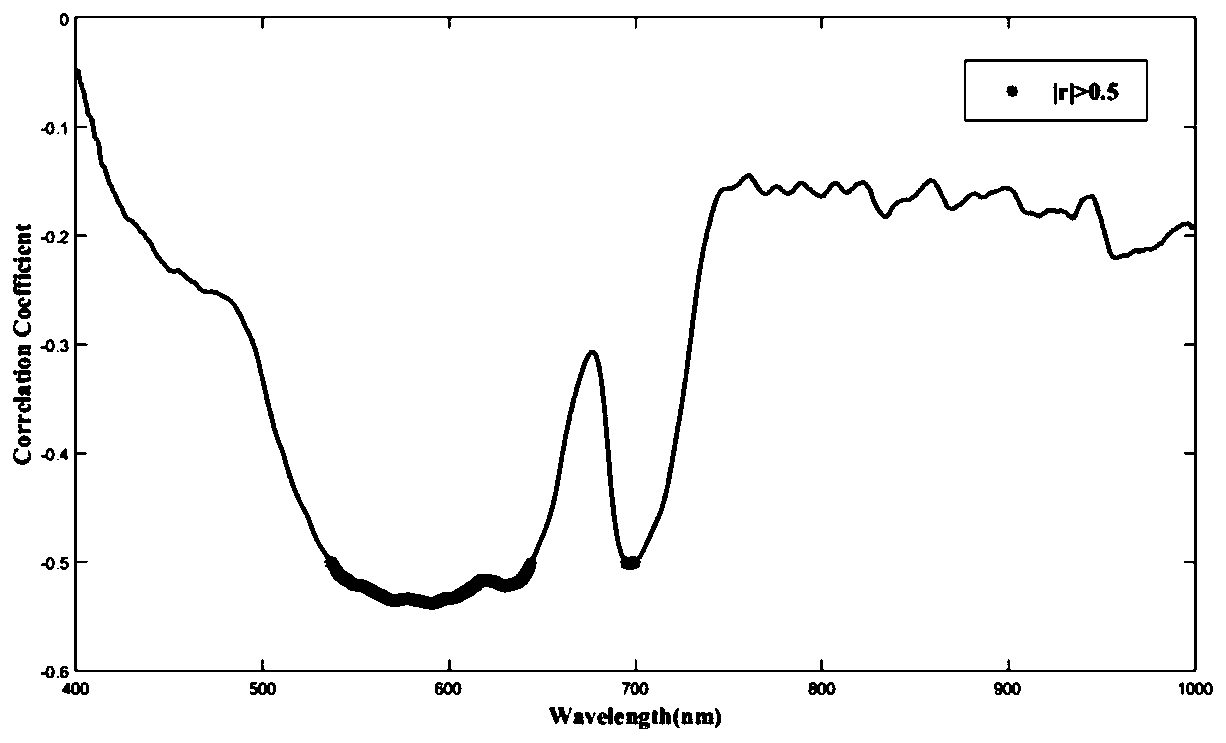Method for predicting potential maximum photosynthetic capacity of plants based on characteristic wavelengths
A technology of characteristic wavelength and prediction method, applied in the field of plant potential maximum photosynthetic capacity prediction based on characteristic wavelength, can solve the problems of inability to accurately predict Fv/Fm, limited amount of reflection spectrum information, simple modeling method, etc. The effect of reducing calculation time and strong generalization ability
- Summary
- Abstract
- Description
- Claims
- Application Information
AI Technical Summary
Problems solved by technology
Method used
Image
Examples
Embodiment Construction
[0054] The following describes the implementation of the present invention in detail with reference to the drawings and embodiments.
[0055] The present invention takes eggplant leaves as the research object, establishes a model for predicting the potential maximum photosynthetic capacity of plants based on characteristic wavelengths, measures the potential maximum photosynthetic capacity values of eggplant leaves and visible-near infrared reflectance spectra under different light gradients as sample data. Carlo method eliminates abnormal samples, divides training set and test set according to 4:1, uses correlation coefficient method combined with continuous projection method to extract characteristic wavelengths, takes the reflectance corresponding to the spectral characteristic wavelengths of the training set samples as input, and the potential maximum photosynthetic capacity is output , Use the radial basis function neural network optimized by genetic algorithm to establish ...
PUM
 Login to View More
Login to View More Abstract
Description
Claims
Application Information
 Login to View More
Login to View More - R&D
- Intellectual Property
- Life Sciences
- Materials
- Tech Scout
- Unparalleled Data Quality
- Higher Quality Content
- 60% Fewer Hallucinations
Browse by: Latest US Patents, China's latest patents, Technical Efficacy Thesaurus, Application Domain, Technology Topic, Popular Technical Reports.
© 2025 PatSnap. All rights reserved.Legal|Privacy policy|Modern Slavery Act Transparency Statement|Sitemap|About US| Contact US: help@patsnap.com



